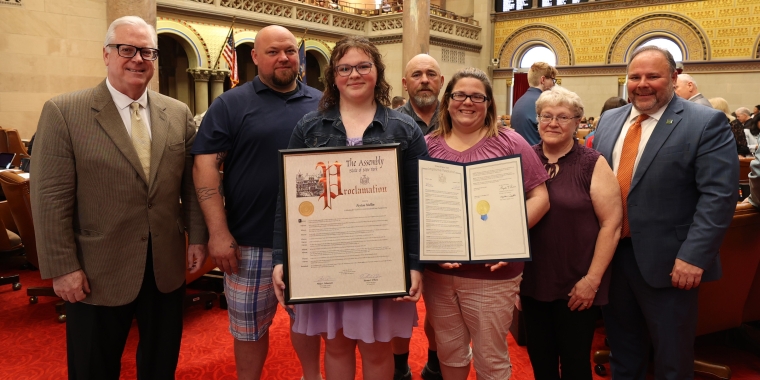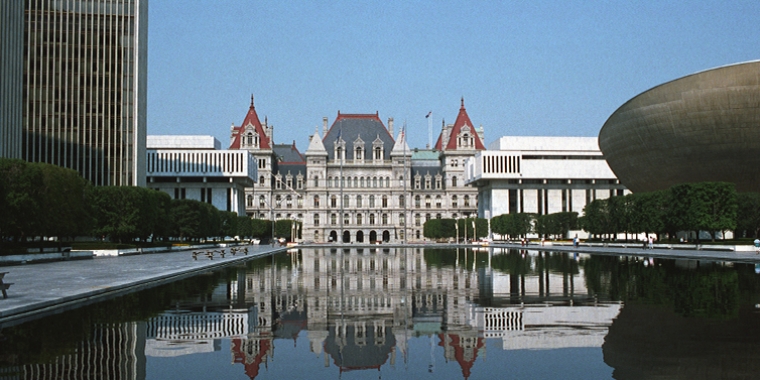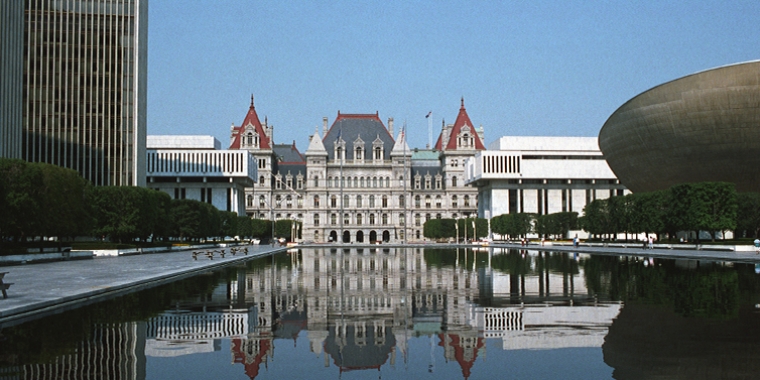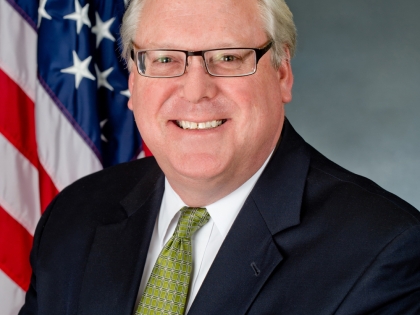
Senator O'Mara's weekly column 'From the Capitol' ~ for the week of February 7, 2022 ~ 'Budget hearings offer chance to spotlight concerns'
February 7, 2022
-
ISSUE:
- State budget
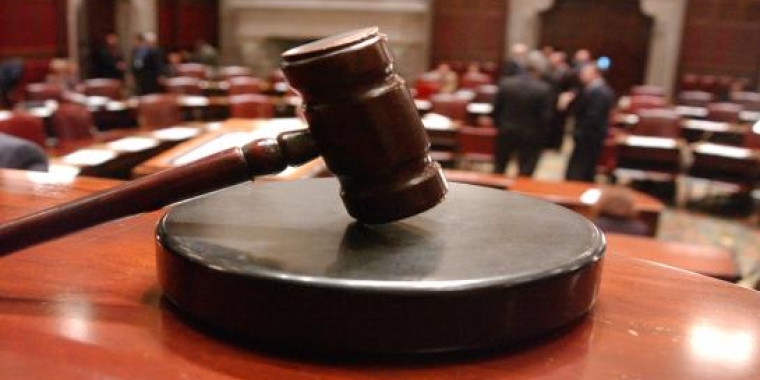
Senator O'Mara offers his weekly perspective on many of the key challenges and issues facing the Legislature, as well as on legislative actions, local initiatives, state programs and policies, and more. Stop back every Monday for Senator O'Mara's latest column...
This week, "Budget hearings offer chance to spotlight concerns"
The Legislature’s fiscal committees – the Senate Finance Committee, and the Assembly Ways and Means Committee – are well into this year’s virtual hearings on Governor Kathy Hochul’s 2022-2023 proposed Executive Budget.
To date, hearings have been conducted to examine the governor’s plans for the coming fiscal year beginning on April 1 for public protection, elementary and secondary education, workforce development, housing, environmental conservation, and human services. This week, we’ll be taking a look at higher education, health, and local government.
The hearings are streamed live. They continue throughout next week and conclude on Wednesday, February 16. In total, 13 hearings will be held. Links to the hearings (including archived videos) can be found here: https://www.nysenate.gov/newsroom/press-releases/liz-krueger/legislature-announces-2022-joint-legislative-budget-hearing
On that note, I’ll also take this chance to point you to the recently released Senate GOP Finance Committee analysis of Governor Hochul’s proposal as another source of information and insight on the governor’s plans. You can find it on my website: https://www.omara.nysenate.gov.
During the hearings members of the Legislature’s fiscal committees hear testimony from top Cuomo administration officials, state agency heads, local leaders, and representatives of the wide range of stakeholders impacted by the state’s annual budget.
As the Ranking Member on the Senate Finance Committee, I look forward to the opportunities these hearings provide to directly question many of the key players in developing and implementing the state’s future.
For example, during last week’s environmental conservation hearing we received testimony from top state officials charged with the ongoing implementation of New York State’s aggressive clean energy and climate agenda, through what’s known as the Climate Leadership and Climate Protection Act (CLCPA). This act was signed into law in 2019 and, for starters, seeks 70% renewable electricity statewide by 2030, just eight short years from now. The state’s current electricity source mix is only 8% wind and solar.
For some time now, I and many others have made it clear that we are on board with positioning New York State as a leader in renewable energy, and we already are a leader! Keep in mind that New York State accounts for just 0.4% of global carbon emissions.
What concerns many of us, however, is the breakneck speed at which Governor Hochul and the Democrat-controlled Legislature are attempting to travel to reach this wholesale remaking of the production and delivery of electricity throughout New York State.
Most importantly, we are deeply concerned about the glaring lack of appropriate, specific cost-benefit analyses that should accompany the act. Ratepayers and the public overall deserve a transparent accounting of what this will cost, where the money will come from (remember that we are talking about billions upon billions of dollars) and what New Yorkers will gain, for starters.
A recent analysis from the Empire Center states, “Governor Hochul’s budget proposal is surprisingly quiet about New York’s most far-reaching and expensive public policy (emphasis mine), the Climate Leadership and Community Protection Act (Climate Act). This act shapes nearly all other state actions by making them subsidiary to reducing carbon emissions statewide.” Anyone who would like to read the Empire Center’s comprehensive and insightful analysis – and I would encourage you to do so – can find it on empirecenter.org.
In short, the path this state is currently taking to reach 70% renewable electricity by 2030 will be hugely expensive for state and local taxpayers, to mention nothing of residential and business utility ratepayers. It holds enormous consequences for the state and local economies.
As I stated at the recent hearing, “People are going to be shocked when they’re hit in the pocketbook.”
Furthermore, the 70% goal is just the beginning of New York State’s ultimate pursuit of a carbon neutral economy. The current plan also calls for 100% zero-carbon electricity by 2040 that will require, along that way, even more massive and massively expensive development and expansions of offshore wind, solar, and the like.
We need a fuller discussion of what all of these actions potentially mean in the important context of feasibility, affordability, and reliability. For example, I currently co-sponsor legislation (S7321/A7524) to require this full cost-benefit analysis for the public. However, because this commonsense and fiscally prudent legislation is sponsored by Republicans in the Senate and Assembly, it faces a steep uphill battle in a Legislature under one-party, Democrat control.
Consequently, we are left to raising these questions and concerns whenever and wherever we can. That’s what some of us did at the recent budget hearing where we had the chance to question several of the key members of the Climate Action Council, including Council Co-chair Doreen Harris, President of the New York State Energy Research and Development Authority, and Rory Christian, Chair of the Public Service Commission. You can view a portion of my exchange at the hearing here: https://www.youtube.com/watch?v=KgspjuJA42o
NYSERDA President Harris testified bluntly and very matter-of-factly, without any indication of concern, that the costs of these energy proposals will be in the hundreds of billions of dollars.
It’s important, we believe, that everyone fully understands this undertaking, particularly what it will cost and how New Yorkers will benefit.
I’ll reiterate that New York State is already an absolute leader in this arena, accounting for just 0.4% of global carbon emissions. The Climate Act will apply only to New York -- not to neighboring states. Nor does it apply to China, India or Russia, which account for 40% of global emissions.
In other words, even if New York State does reach zero emissions, it will have zero impact on the global climate.
At a cost of hundreds of billions of dollars to New Yorkers and untold costs to the economy, this will surely further crush the affordability of living for families, drive up the cost of doing business, and further limit economic opportunity.
It’s fair to ask, in fact it’s critical to ask, in my view, the following: at what cost to the lives of New Yorkers?
For example, the overall direction anticipates job losses and negative impacts to school and local government property tax bases. Proposals have been put forth to establish a “Just Fund” that would provide compensation for displaced workers up to three years of wages, and payments to school districts and local governments for lost tax revenues resulting from industries being shuttered. Proposals have been introduced that would increase gasoline costs by an additional 55-cents-per-gallon tax and drive up home heating fuel by 26%.
Millions of homeowners could be facing, in a very near future, having to convert their natural gas, propane, or heating fuel oil furnaces to electric at estimated costs of as much as $30,000 per household.
In just five years, 2027, you will no longer be able to build a new home or building in New York State with a natural gas, propane, or fuel oil furnace or boiler.
It’s our belief that, every step of the way, there must be a constant recognition of the need for balance and common sense in pursuit of the overriding goals for New York’s energy future. There absolutely must be a meaningful analysis of the costs versus the benefits of these actions, the economic costs, and the impacts they will have on our energy system’s reliability as well as affordability.
That’s just one example of what these ongoing budget hearings offer to raise important discussions, or at least to try to put a spotlight on some of what’s facing our state’s citizens.
###
Share this Article or Press Release
Newsroom
Go to Newsroom